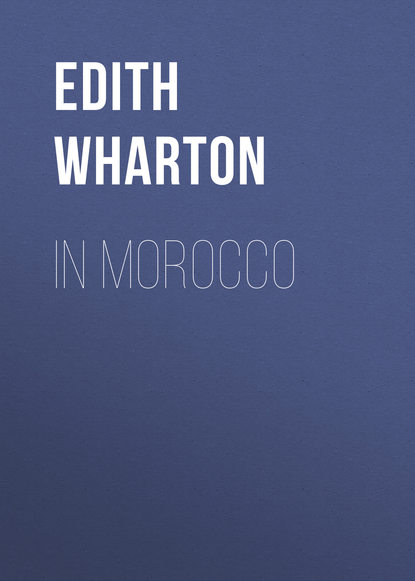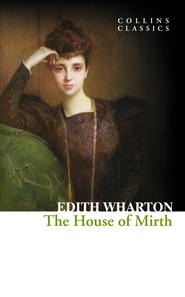По всем вопросам обращайтесь на: info@litportal.ru
(©) 2003-2024.
✖
In Morocco
Настройки чтения
Размер шрифта
Высота строк
Поля
From far off, through circuitous corridors, came the scent of citron-blossom and jasmine, with sometimes a bird's song before dawn, sometimes a flute's wail at sunset, and always the call of the muezzin in the night; but no sunlight reached the apartment except in remote rays through the clerestory, and no air except through one or two broken panes.
Sometimes, lying on my divan, and looking out through the vermilion doors, I used to surprise a pair of swallows dropping down from their nest in the cedar-beams to preen themselves on the fountain's edge or in the channels of the pavement; for the roof was full of birds who came and went through the broken panes of the clerestory. Usually they were my only visitors; but one morning just at daylight I was waked by a soft tramp of bare feet, and saw, silhouetted against the cream-coloured walls, a procession of eight tall negroes in linen tunics, who filed noiselessly across the atrium like a moving frieze of bronze. In that fantastic setting, and the hush of that twilight hour, the vision was so like the picture of a "Seraglio Tragedy," some fragment of a Delacroix or Decamps floating up into the drowsy brain, that I almost fancied I had seen the ghosts of Ba-Ahmed's executioners revisiting with dagger and bowstring the scene of an unavenged crime.
A cock crew, and they vanished … and when I made the mistake of asking what they had been doing in my room at that hour I was told (as though it were the most natural thing in the world) that they were the municipal lamp-lighters of Marrakech, whose duty it is to refill every morning the two hundred acetylene lamps lighting the palace of the Resident General. Such unforeseen aspects, in this mysterious city, do the most ordinary domestic functions wear.
III
THE BAZAARS
Passing out of the enchanted circle of the Bahia it is startling to plunge into the native life about its gates.
Marrakech is the great market of the south; and the south means not only the Atlas with its feudal chiefs and their wild clansmen, but all that lies beyond of heat and savagery: the Sahara of the veiled Touaregs, Dakka, Timbuctoo, Senegal and the Soudan. Here come the camel caravans from Demnat and Tameslout, from the Moulouya and the Souss, and those from the Atlantic ports and the confines of Algeria. The population of this old city of the southern march has always been even more mixed than that of the northerly Moroccan towns. It is made up of the descendants of all the peoples conquered by a long line of Sultans who brought their trains of captives across the sea from Moorish Spain and across the Sahara from Timbuctoo. Even in the highly cultivated region on the lower slopes of the Atlas there are groups of varied ethnic origin, the descendants of tribes transplanted by long-gone rulers and still preserving many of their original characteristics.
In the bazaars all these peoples meet and mingle: cattle-dealers, olive-growers, peasants from the Atlas, the Souss and the Draa, Blue Men of the Sahara, blacks from Senegal and the Soudan, coming in to trade with the wool-merchants, tanners, leather-merchants, silk-weavers, armourers, and makers of agricultural implements.
Dark, fierce and fanatical are these narrow souks of Marrakech. They are mere mud lanes roofed with rushes, as in South Tunisia and Timbuctoo, and the crowds swarming in them are so dense that it is hardly possible, at certain hours, to approach the tiny raised kennels where the merchants sit like idols among their wares. One feels at once that something more than the thought of bargaining—dear as this is to the African heart—animates these incessantly moving throngs. The Souks of Marrakech seem, more than any others, the central organ of a native life that extends far beyond the city walls into secret clefts of the mountains and far-off oases where plots are hatched and holy wars fomented—farther still, to yellow deserts whence negroes are secretly brought across the Atlas to that inmost recess of the bazaar where the ancient traffic in flesh and blood still surreptitiously goes on.
All these many threads of the native life, woven of greed and lust, of fetichism and fear and blind hate of the stranger, form, in the souks, a thick network in which at times one's feet seem literally to stumble. Fanatics in sheepskins glowering from the guarded thresholds of the mosques, fierce tribesmen with inlaid arms in their belts and the fighters' tufts of wiry hair escaping from camel's-hair turbans, mad negroes standing stark naked in niches of the walls and pouring down Soudanese incantations upon the fascinated crowd, consumptive Jews with pathos and cunning in their large eyes and smiling lips, lusty slave-girls with earthen oil-jars resting against swaying hips, almond-eyed boys leading fat merchants by the hand, and bare-legged Berber women, tattooed and insolently gay, trading their striped blankets, or bags of dried roses and irises, for sugar, tea or Manchester cottons—from all these hundreds of unknown and unknowable people, bound together by secret affinities, or intriguing against each other with secret hate, there emanates an atmosphere of mystery and menace more stifling than the smell of camels and spices and black bodies and smoking fry which hangs like a fog under the close roofing of the souks.
And suddenly one leaves the crowd and the turbid air for one of those quiet corners that are like the back-waters of the bazaars: a small square where a vine stretches across a shop-front and hangs ripe clusters of grapes through the reeds. In the patterning of grape-shadows a very old donkey, tethered to a stone-post, dozes under a pack-saddle that is never taken off; and near by, in a matted niche, sits a very old man in white. This is the chief of the Guild of "morocco" workers of Marrakech, the most accomplished craftsman in Morocco in the preparing and using of the skins to which the city gives its name. Of these sleek moroccos, cream-white or dyed with cochineal or pomegranate skins, are made the rich bags of the Chleuh dancing-boys, the embroidered slippers for the harem, the belts and harnesses that figure so largely in Moroccan trade—and of the finest, in old days, were made the pomegranate-red morocco bindings of European bibliophiles.
From this peaceful corner one passes into the barbaric splendor of a souk hung with innumerable plumy bunches of floss silk—skeins of citron yellow, crimson, grasshopper green and pure purple. This is the silk-spinners' quarter, and next to it comes that of the dyers, with great seething vats into which the raw silk is plunged, and ropes overhead where the rainbow masses are hung out to dry.
Another turn leads into the street of the metalworkers and armourers, where the sunlight through the thatch flames on round flanks of beaten copper or picks out the silver bosses of ornate powder-flasks and pistols; and near by is the souk of the plough-shares, crowded with peasants in rough Chleuh cloaks who are waiting to have their archaic ploughs repaired, and that of the smiths, in an outer lane of mud huts where negroes squat in the dust and sinewy naked figures in tattered loincloths bend over blazing coals. And here ends the maze of the bazaars.
IV
THE AGDAL
One of the Almohad Sultans who, during their hundred years of empire, scattered such great monuments from Seville to the Atlas, felt the need of coolness about his southern capital, and laid out the olive-yards of the Agdal.
To the south of Marrakech the Agdal extends for many acres between the outer walls of the city and the edge of the palm-oasis—a continuous belt of silver foliage traversed by deep red lanes, and enclosing a wide-spreading summer palace and two immense reservoirs walled with masonry; and the vision of these serene sheets of water, in which the olives and palms are motionlessly reflected, is one of the most poetic impressions in that city of inveterate poetry.
On the edge of one of the reservoirs a sentimental Sultan built in the last century a little pleasure-house called the Menara. It is composed of a few rooms with a two-storied loggia looking across the water to the palm-groves, and surrounded by a garden of cypresses and orange-trees. The Menara, long since abandoned, is usually uninhabited; but on the day when we drove through the Agdal we noticed, at the gate, a group of well-dressed servants holding mules with embroidered saddle-clothes.
The French officer who was with us asked the porter what was going on, and he replied that the Chief of the Guild of Wool-Merchants had hired the pavilion for a week and invited a few friends to visit him. They were now, the porter added, taking tea in the loggia above the lake; and the host, being informed of our presence, begged that we should do him and his friends the honour of visiting the pavilion.
In reply to this amiable invitation we crossed an empty saloon surrounded with divans and passed out onto the loggia where the wool-merchant and his guests were seated. They were evidently persons of consequence: large bulky men wrapped in fresh muslins and reclining side by side on muslin-covered divans and cushions. Black slaves had placed before them brass trays with pots of mint-tea, glasses in filigree stands, and dishes of gazelles' horns and sugar-plums; and they sat serenely absorbing these refreshments and gazing with large calm eyes upon the motionless water and the reflected trees.
So, we were told, they would probably spend the greater part of their holiday. The merchant's cooks had taken possession of the kitchens, and toward sunset a sumptuous repast of many courses would be carried into the saloon on covered trays, and the guests would squat about it on rugs of Rabat, tearing with their fingers the tender chicken wings and small artichokes cooked in oil, plunging their fat white hands to the wrist into huge mounds of saffron and rice, and washing off the traces of each course in the brass basin of perfumed water carried about by a young black slave-girl with hoop-earrings and a green-and-gold scarf about her hips.
Then the singing-girls would come out from Marrakech, squat round-faced young women heavily hennaed and bejewelled, accompanied by gaunt musicians in bright caftans; and for hours they would sing sentimental or obscene ballads to the persistent maddening twang of violin and flute and drum. Meanwhile fiery brandy or sweet champagne would probably be passed around between the steaming glasses of mint-tea which the slaves perpetually refilled; or perhaps the sultry air, the heavy meal, the scent of the garden and the vertiginous repetition of the music would suffice to plunge these sedentary worthies into the delicious coma in which every festive evening in Morocco ends.
The next day would be spent in the same manner, except that probably the Chleuh boys with sidelong eyes and clean caftans would come instead of the singing-girls, and weave the arabesque of their dance in place of the runic pattern of the singing. But the result would always be the same: a prolonged state of obese ecstasy culminating in the collapse of huge heaps of snoring muslin on the divans against the wall. Finally at the week's end the wool-merchant and his friends would all ride back with dignity to the bazaar.
V
ON THE ROOFS
"Should you like to see the Chleuh boys dance?" some one asked.
"There they are," another of our companions added, pointing to a dense ring of spectators on one side of the immense dusty square at the entrance of the souks—the "Square of the Dead" as it is called, in memory of the executions that used to take place under one of its grim red gates.
It is the square of the living now, the centre of all the life, amusement and gossip of Marrakech, and the spectators are so thickly packed about the story-tellers, snake-charmers and dancers who frequent it that one can guess what is going on within each circle only by the wailing monologue or the persistent drum-beat that proceeds from it.
Ah, yes—we should indeed like to see the Chleuh boys dance; we who, since we had been in Morocco, had seen no dancing, heard no singing, caught no single glimpse of merry-making! But how were we to get within sight of them?
On one side of the "Square of the Dead" stands a large house, of European build, but modelled on Oriental lines: the office of the French municipal administration. The French Government no longer allows its offices to be built within the walls of Moroccan towns, and this house goes back to the epic days of the Caïd Sir Harry Maclean, to whom it was presented by the fantastic Abd-el-Aziz when the Caïd was his favourite companion as well as his military adviser.
At the suggestion of the municipal officials we mounted the stairs and looked down on the packed square. There can be no more Oriental sight this side of the Atlas and the Sahara. The square is surrounded by low mud-houses, fondaks, cafés, and the like. In one corner, near the archway leading into the souks, is the fruit-market, where the red-gold branches of unripe dates[19 - Dates do not ripen in Morocco.] for animal fodder are piled up in great stacks, and dozens of donkeys are coming and going, their panniers laden with fruits and vegetables which are being heaped on the ground in gorgeous pyramids: purple egg-plants, melons, cucumbers, bright orange pumpkins, mauve and pink and violet onions, rusty crimson pomegranates and the gold grapes of Sefrou and Salé, all mingled with fresh green sheaves of mint and wormwood.
In the middle of the square sit the story-tellers' turbaned audiences. Beyond these are the humbler crowds about the wild-ringleted snake-charmers with their epileptic gestures and hissing incantations, and farther off, in the densest circle of all, we could just discern the shaved heads and waving surpliced arms of the dancing-boys. Under an archway near by an important personage in white muslin, mounted on a handsome mule and surrounded by his attendants, sat with motionless face and narrowed eyes gravely following the movements of the dancers.
Suddenly, as we stood watching the extraordinary animation of the scene, a reddish light overspread it, and one of our companions exclaimed: "Ah—a dust-storm!"
In that very moment it was upon us: a red cloud rushing across the square out of nowhere, whirling the date-branches over the heads of the squatting throngs, tumbling down the stacks of fruits and vegetables, rooting up the canvas awnings over the lemonade-sellers' stalls and before the café doors, huddling the blinded donkeys under the walls of the fondak, and stripping to the hips the black slave-girls scudding home from the souks.
Such a blast would instantly have scattered any western crowd, but "the patient East" remained undisturbed, rounding its shoulders before the storm and continuing to follow attentively the motions of the dancers and the turns of the story-tellers. By and bye, however, the gale grew too furious, and the spectators were so involved in collapsing tents, eddying date-branches and stampeding mules that the square began to clear, save for the listeners about the most popular story-teller, who continued to sit on unmoved. And then, at the height of the storm, they too were abruptly scattered by the rush of a cavalcade across the square. First came a handsomely dressed man, carrying before him on his peaked saddle a tiny boy in a gold-embroidered orange caftan, in front of whom he held an open book; and behind them a train of white-draped men on showily harnessed mules, followed by musicians in bright dresses. It was only a Circumcision procession on its way to the mosque; but the dust-enveloped rider in his rich dress, clutching the bewildered child to his breast, looked like some Oriental prince trying to escape with his son from the fiery embraces of desert Erl-maidens.
As swiftly as it rose the storm subsided, leaving the fruit-market in ruins under a sky as clear and innocent as an infant's eye. The Chleuh boys had vanished with the rest, like marionettes swept into a drawer by an impatient child; but presently, toward sunset, we were told that we were to see them after all, and our hosts led us up to the roof of the Caïd's house.
The city lay stretched before us like one immense terrace circumscribed by palms. The sky was pure blue, verging to turquoise green where the Atlas floated above mist; and facing the celestial snows stood the Koutoubya, red in the sunset.
People were beginning to come out on the roofs: it was the hour of peace, of ablutions, of family life on the house-tops. Groups of women in pale tints and floating veils spoke to each other from terrace to terrace, through the chatter of children and the guttural calls of bedizened negresses. And presently, on the roof adjoining ours, appeared the slim dancing-boys with white caftans and hennaed feet.
The three swarthy musicians who accompanied them crossed their lean legs on the tiles and set up their throb-throb and thrum-thrum, and on a narrow strip of terrace the youths began their measured steps.
It was a grave static dance, such as David may have performed before the Ark; untouched by mirth or folly, as beseemed a dance in that sombre land, and borrowing its magic from its gravity. Even when the pace quickened with the stress of the music the gestures still continued to be restrained and hieratic; only when, one by one, the performers detached themselves from the round and knelt before us for the peseta it is customary to press on their foreheads, did one see, by the moisture which made the coin adhere, how quick and violent their movements had been.
The performance, like all things Oriental, like the life, the patterns, the stories, seemed to have no beginning and no end: it just went monotonously and indefatigably on till fate snipped its thread by calling us away to dinner. And so at last we went down into the dust of the streets refreshed by that vision of white youths dancing on the house-tops against the gold of a sunset that made them look—in spite of ankle-bracelets and painted eyes—almost as guileless and happy as the round of angels on the roof of Fra Angelico's Nativity.
VI
THE SAADIAN TOMBS
On one of the last days of our stay in Marrakech we were told, almost mysteriously, that permission was to be given us to visit the tombs of the Saadian Sultans.
Though Marrakech has been in the hands of the French since 1912, the very existence of these tombs was unknown to the authorities till 1917. Then the Sultan's government privately informed the Resident General that an unsuspected treasure of Moroccan art was falling into ruin, and after some hesitation it was agreed that General Lyautey and the Director of Fine Arts should be admitted to the mosque containing the tombs, on the express condition that the French Government undertook to repair them. While we were at Rabat General Lyautey had described his visit to us, and it was at his request that the Sultan authorized us to see the mosque, to which no travellers had as yet been admitted.
With a good deal of ceremony, and after the customary pourparlers with the great Pasha who controls native affairs at Marrakech, an hour was fixed for our visit, and we drove through long lanes of mud-huts to a lost quarter near the walls. At last we came to a deserted square on one side of which stands the long low mosque of Mansourah with a turquoise-green minaret embroidered with traceries of sculptured terra cotta. Opposite the mosque is a gate in a crumbling wall; and at this gate the Pasha's Cadi was to meet us with the keys of the mausoleum. But we waited in vain. Oriental dilatoriness, or a last secret reluctance to admit unbelievers to a holy place, had caused the Cadi to forget his appointment; and we drove away disappointed.
The delay drove us to wondering about these mysterious Saadian Sultans, who, though coming so late in the annals of Morocco, had left at least one monument said to be worthy of the Merinid tradition. And the tale of the Saadians is worth telling.
They came from Arabia to the Draa (the fruitful country south of the Great Atlas) early in the fifteenth century, when the Merinid empire was already near disintegration. Like all previous invaders they preached the doctrine of a pure Islamism to the polytheistic and indifferent Berbers, and found a ready hearing because they denounced the evils of a divided empire, and also because the whole of Morocco was in revolt against the Christian colonies of Spain and Portugal, which had encircled the coast from Ceuta to Agadir with a chain of fortified counting-houses. To bouter dehors the money-making unbeliever was an object that found adherents from the Rif to the Sahara, and the Saadian cherifs soon rallied a mighty following to their standard. Islam, though it never really gave a creed to the Berbers, supplied them with a war-cry as potent to-day as when it first rang across Barbary.
The history of the Saadians is a foreshortened record of that of all their predecessors. They overthrew the artistic and luxurious Merinids, and in their turn became artistic and luxurious. Their greatest Sultan, Abou-el-Abbas, surnamed "The Golden," after defeating the Merinids and putting an end to Christian rule in Morocco by the crushing victory of El-Ksar (1578), bethought him in his turn of enriching himself and beautifying his capital, and with this object in view turned his attention to the black kingdoms of the south.
Senegal and the Soudan, which had been Mohammedan since the eleventh century, had attained in the sixteenth century a high degree of commercial wealth and artistic civilization. The Sultanate of Timbuctoo seems in reality to have been a thriving empire, and if Timbuctoo was not the Claude-like vision of Carthaginian palaces which it became in the tales of imaginative travellers, it apparently had something of the magnificence of Fez and Marrakech.










